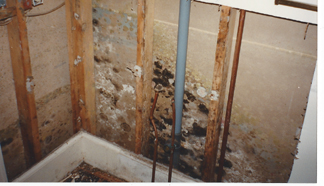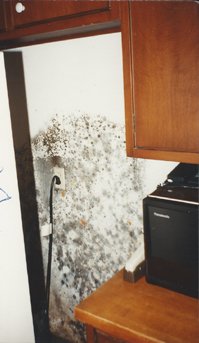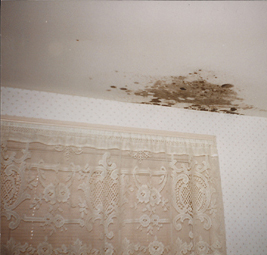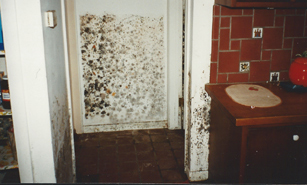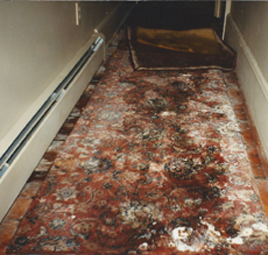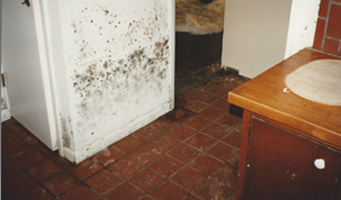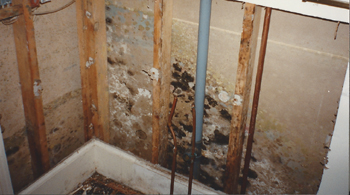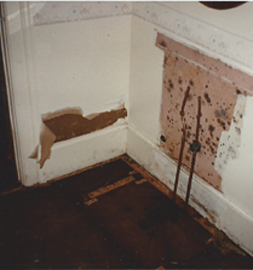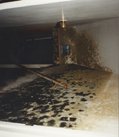MOLD or MILDEW?
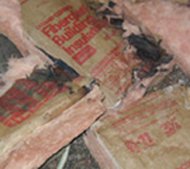
What are They?
Mold or mildew can both grow and spread quickly soon after water has flooded your home or business. If you are confused about how to identify either of them, (especially the dangerous ones) please read on.
Both are forms of fungi. Mildew is actually a type of mold. They are members of a large variety of micro-organisms which also include algae, rusts, yeasts, and bacteria. They have the ability to exist on just about any type of material and they are often called the 'chief agents of deterioration.'
THE DIFFERENCES
MOLD
Active mold is usually red, green, blue, and black and tends to be fuzzy and slimy. Mold can survive on non-living materials such as tile and plastic as well as on plants.
MILDEW
Mildew is usually powdery and most commonly comes in colors of gray and white. Mildew thrives on surfaces where the moisture content is very high. Examples would be ceilings, walls, floors, window sills, leather, paper, etc. It is usually mildew that is found in showers, bathtubs, sinks, and toilets.
There is a type of mildew that is specific to wool carpet and rugs and another type of mildew can be found as yellow spots on leaves or fruits.
Mildew specifically seeks out animal and plant goods and is thus especially devastating to crops.
The SIMILARITIES
Mold and mildew cannot resist surfaces where there is moisture. They both prosper in dark, humid, damp, and poorly ventilated environments.
Both are invisible and odorless! You may ask what those black, green or yellow spots are. And what about that moldy odor? What you are actually seeing and smelling is the end result of the digestive process of these micro-organisms as they eat through your organic possessions.
Both of these, since they are forms of fungi, do not need to derive their energy for growth from light. Instead, they need organic materials to supply their nutrients.
Both of these micro-organisms spread by sending out massive amounts of spores (or seeds) that are always present in the air and are spread by air currents. Once landing on a host material, the spores must find sufficient moisture and food to germinate. If the spores cannot find moisture, they will remain in the air, lying dormant until moisture occurs.
MOLD or MILDEW?
DANGEROUS TO HUMANS?
Mold and mildew cause many problems for humans. In particular, they can escalate asthma and allergies and mold can cause serious fatigue. A form of toxic black mold, Stachybotrys atra, a greenish-black, slimy mold resembling tar or black paint, is a mold that is extremely dangerous and can cause many more serious health problems than other types of molds.
MOLD or MILDEW?
BENEFICIAL to HUMANS?
It is true that although all molds can cause ill effects, some actually have beneficial uses in the scientific and food industries. Molds are used in the production of some medicines such as penicillin, as well as some cholesterol lowering drugs and even some immune-suppressant drugs.
Molds are also used in the production of foods such as cheese, bread, soy sauce, etc.
Most important, molds are also essential for our environment for their role in breaking up waste and dead matter and thus helping in the fertilization of soil.
Mildew, on the other hand, does not seem to have any beneficial uses at all! (Except to remind us that we need to lower the humidity in certain areas, such as our bathrooms!)
Want More Information on
Mold or Mildew?
If you would like to have more information on mold and mildew, how to prevent them, and what procedures to take to remove them, please refer to the article on mold on this website. You may also call our office at 272-1566 or contact us by clicking here.
"The Cleanest Clean You've Ever Seen."
by
ABC Oriental Rug & Carpet Cleaning Co.
130 Cecil Malone Drive Ithaca, NY 14850
607-272-1566
